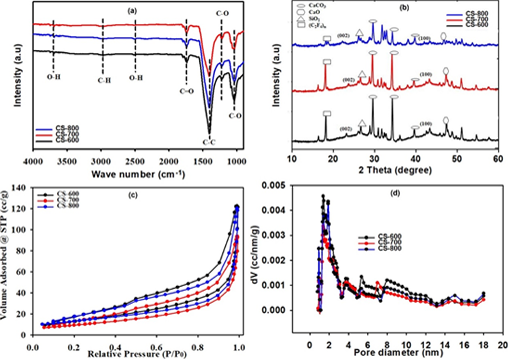Design and fabrication of chitin-derived electrodes with optimization of temperature carbonization for energy storage in supercapacitors
DOI:
https://doi.org/10.59190/stc.v5i3.310Keywords:
Activated Carbon, Carbonization, Chitin, Electrode, SupercapacitorAbstract
Supercapacitors have become one of the potential solutions for efficient energy storage, and the development of carbon-based electrodes from biomass has received increasing attention due to their sustainability. This study aims to produce carbon electrodes from crab shells (CS) as biomass materials by optimizing the carbonization process with temperature variations of 600°C, 700°C, and 800°C for supercapacitor cell applications. Material characterization shows that the carbonization temperature of 700°C produces carbon electrodes with optimal semicrystalline structures and mesopore dominance, which supports efficient ion diffusion. The CS-700 carbon electrode showed the highest specific capacitance of 118.84 F/g in cyclic voltammetry tests with 1 M H2SO4 electrolyte. These results indicate that carbonization at 700°C provides the best electrochemical performance, making it the optimal condition for developing efficient and environmentally friendly mud crab shell biomass-based electrodes for supercapacitor cell applications.

Downloads
Published
How to Cite
Issue
Section
License
Copyright (c) 2025 Rakhmawati Farma, Meisya Meisya, Irma Apriyani, Awitdrus Awitdrus, Erman Taer

This work is licensed under a Creative Commons Attribution 4.0 International License.










